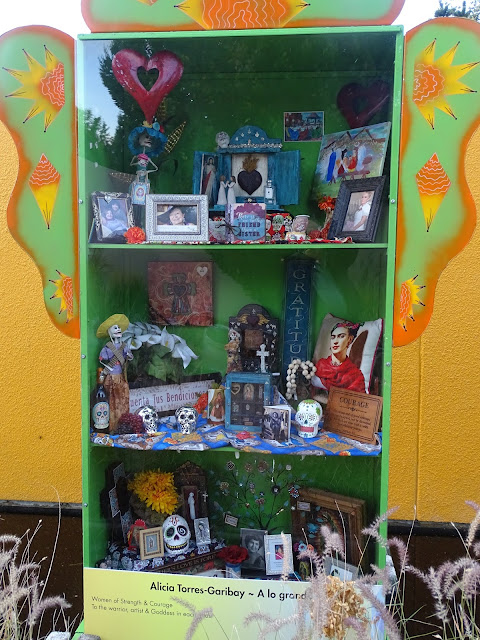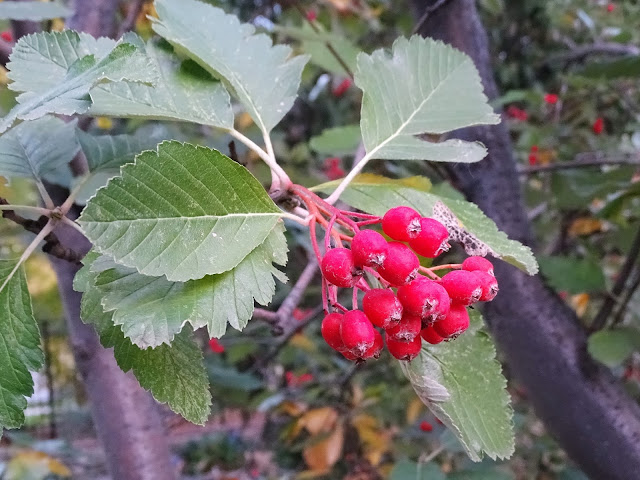 |
| Rheum nanum in the Steppe Garden, DBG Sept. 30 2016 (Photo by Eleftherios Dariotis) |
One of my MANY favorite quotations by Chekhov is that "In descriptions of Nature one must seize on small details, grouping them
so that when the reader closes his eyes he gets a picture. For
instance, you’ll have a moonlit night if you write that on the mill dam a
piece of glass from a broken bottle glittered like a bright little
star, and that the black shadow of a dog or a wolf rolled past like a
ball.”
 |
| Same plant a few weeks later, photographed by Mike Bone |
I should have stopped at Florida and Uinta this afternoon where I was driving, and saw below me Denver outstretched to the west, a half hour or so before sunset: all lavender and mauve with a band of vivid vanilla, golden light on the horizon, and the trees of the city all golden--old gold, but also schoolbus yellow: poplars at the height of fall color, but also elms, the last ash, but also lindens and all manner of oaks as well--with the occasional scarlet smudge here and there. Simply awesome! But notice how the rhubarb has changed in three weeks--when Mike Bone photographed it...

And yesterday, I took a picture of the same plant in the same spot--a week or so after Mike. This awesome transformation, caught in miniature, is a miniature of the grandeur of autumn in temperate climates. I wish I didn't have a hundred distractions. I should have been wandering the streets of Denver, the foothills and the prairies capturing the magnificent colors of the season. Winter, of course, has her majesty, and spring is spring and summer glorious, but the extraordinary coloration of fall is never sung enough...
Somewhere I have a picture of the plant that produced the seed from which this plant was grown: I hope it hasn't been lost in the shuffle of a crazy life. It was back in 2009...on the windswept barrens of a rocky canyon that could have been in Bryce or Zion. Look the taxon up in Google Images, and you'll see why I'm a little daft about it: I think it justified our two trips to Kazakhstan. If I find the picture I shall add it (you see, you have to revisit my blog--I am always quietly upgrading things in the interim...)
 |
| Rheum compactum |
Rheum nanum may be the smallest, but this one was very compact (as the name suggests) as well--photographed above treeline in Westermost Mongolia.
 |
| Another shot of R. compactum |
I believe this one is in cultivation in Britain: I saw (and photographed) a lusty plant at Wisley in 2009 I believe [they were doing
Rheum trials]--and if I find that one I shall add it as well...
 |
| Parting shot of Rheum compactum in late June of 2009 |
We saw three, maybe four other species in the Tian Shan and Altai mountains of Kazakhstan--and saw people selling the stems by the side of the road (although I believe they're all considered protected due to overharvesting). And we saw stems of dormant
Rheum tataricum that had blown into gullies (the plants were dormant)--that has to be another gem we need to grow.
There's a lot more to rhubarb than just pies, and the cultivars we grow in our gardens currently. I hope one day this miniature gem will produce viable seed and we can eventually grow more and share it far and wide...that is what botanic gardening (and plantsmanship) are all about, after all...



























































































